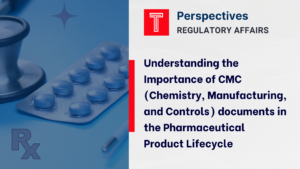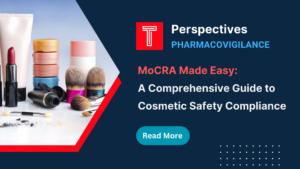MoCRA Made Easy: A Comprehensive Guide to Cosmetic Safety Compliance
On December 14, 2023, the U.S. Food and Drug Administration (FDA) issued updated instructions for facility registration, product listing, safety substantiation, and reporting adverse events associated with cosmetic products, further solidifying its enhanced oversight role mandated by the Modernization of Cosmetics Regulation Act (MoCRA) of 2022.
This new legislation empowers the Food and Drug Administration (FDA) with broader oversight, aiming to ensure the safety and quality of cosmetic products for consumers. Let’s delve deeper into the key provisions of MoCRA in its fullest detail:
Facility Registration
Prior to MoCRA, cosmetic facilities operated largely under self-regulation. Recognizing the need for transparency and accountability, MoCRA mandates the registration of all establishments engaged in the manufacturing, packaging, labeling, or holding of finished cosmetic products for U.S. distribution and renew their registration every two years.. This registration process creates a comprehensive database, enabling the FDA to track cosmetic production and distribution pathways.
Facility Registration and the FDA Establishment Identifier (FEI):
MoCRA utilizes the existing FDA Establishment Identifier (FEI) system for facility registration. This means the required facility registration number will be your assigned FEI. To streamline the process, obtaining an FEI number beforehand is recommended.
> Checking for Existing FEI:
Before acquiring a new FEI, check if your firm already possesses one through the FEI Search Portal. Simply enter your company information to see if a matching FEI exists.
> Obtaining a New FEI:
If your firm lacks an assigned FEI, navigate to the “How can I request an FEI?” section within the FEI Search Portal. This section guides you through the process of requesting a new FEI, ensuring you have the necessary information and documentation readily available.
Form FDA 5066: Registration of Cosmetic Product Facility
MoCRA Submission Options Now Available:
As of January 8, 2024, the FDA offers SPL Xforms, a new Structured Product Labeling (SPL) authoring tool for streamlined cosmetic product facility registration and listing. This tool simplifies data entry and ensures compliance with SPL formatting requirements.
Additionally, the FDA continues to accept electronic submissions through Cosmetics Direct and SPL-formatted submissions via the Electronic Submissions Gateway (ESG). These established options provide flexibility for businesses already familiar with their functionalities.
Contact us by submitting a business inquiry online. We will get back to you very soon.
For those preferring a paper approach, Forms FDA 5066 and 5067 are now available for download and submission. Completed forms can be mailed or emailed to the designated addresses.
Compliance Dates under MoCRA
While MoCRA introduced mandatory facility registration and product listing for cosmetic products, the FDA is currently implementing a gradual enforcement timeline to provide the industry time to adjust. Here’s a breakdown of the key dates:
Original Statutory Deadline: December 29, 2023
Delayed Enforcement Start Date: July 1, 2024 (six months after the original deadline)
This means that:
> Existing facilities and products: All facilities operating and products marketed before December 29, 2023, must comply with the registration and listing requirements by July 1, 2024.
> New facilities and products: Facilities that began operating after December 29, 2023, and products first marketed after that date have until July 1, 2024 to register and list.
This temporary enforcement delay provides valuable time for industry stakeholders to familiarize themselves with the new requirements and prepare for compliance. However, it’s crucial to remember that MoCRA remains in effect, and all cosmetic facilities and products will eventually need to be registered and listed with the FDA.
For further information and detailed guidance, you can refer to the FDA’s document: Guidance for Industry: Compliance Policy for Cosmetic Product Facility Registration and Cosmetic Product Listing.
Suspension of Facility Registration under MoCRA
The FDA has the authority to temporarily suspend a cosmetic facility’s registration if it meets two critical conditions:
> Serious Safety Risk: The agency must determine that a cosmetic product manufactured or processed by the facility and distributed in the US has a reasonable probability of causing serious adverse health consequences or death to humans. This could involve documented cases of severe allergic reactions, chemical burns, or other serious health issues linked to the product.
> Widespread Failure: The FDA must also have a reasonable belief that other products manufactured or processed by the facility may be similarly affected. This means the safety concern is not likely an isolated incident with a single product, but rather indicates a systemic issue or failure within the facility’s manufacturing practices or quality control measures.
Product Listing
Complementing facility registration, MoCRA introduces mandatory product listing for all cosmetic products marketed in the US. Manufacturers and distributors must submit detailed information, including product name, ingredients, labeling, and manufacturer details, to the FDA . This centralized product repository enhances traceability and facilitates targeted safety interventions if necessary.
Form FDA 5067: Cosmetic Product Listing
MoCRA Exemptions for Small Businesses
While MoCRA tightens regulations for most cosmetics, small businesses may qualify for exemptions from certain requirements like quality control practices, facility registration, and product listing. Understanding these exceptions helps small businesses navigate MoCRA and focus on necessary compliance measures.
However, these exemptions do not apply to all small businesses. The following product categories remain subject to full MoCRA requirements, regardless of the manufacturer’s size:
> Eye Products: Cosmetics intended for regular contact with the eye’s mucus membranes (e.g., mascara, eyeliner).
> Injectable Products: Any cosmetic product designed for injection.
> Internal Use Products: Cosmetics intended for internal consumption (e.g., teeth whiteners with internal application).
> Long-Lasting Appearance Products: Cosmetics that alter appearance for more than 24 hours without requiring consumer removal (e.g., hair dyes, permanent tattoos).
Person Responsible
Understanding who the responsible person is for a particular cosmetic product is essential for various stakeholders in the industry. For manufacturers and distributors, it clarifies their legal obligations and responsibilities under MoCRA. For consumers, it provides a clear point of contact for reporting concerns or seeking information about the product’s safety.
As per MoCRA, the responsible person is a representative group from either of these parties:
> The manufacturer: This includes any entity that produces or significantly alters the cosmetic product before its distribution in the US.
> The packer: This refers to the entity that packages the finished cosmetic product for distribution.
> The distributor: This encompasses any entity that introduces the finished cosmetic product into US commerce, including importers, wholesalers, and retailers.
Importantly, the responsible person is designated as the entity whose name appears on the product label in accordance with specific sections of the Federal Food, Drug, and Cosmetic Act (FD&C Act) and the Fair Packaging and Labeling Act (FPLA). This designation clarifies who is ultimately accountable for ensuring the product’s safety, labeling accuracy, and compliance with MoCRA’s requirements.
Adverse Event Reporting (MedWatch)
One of MoCRA’s most significant provisions is the mandatory reporting of serious adverse events (SAEs) associated with cosmetic products through the FDA’s MedWatch system. Responsible persons from manufacturers and distributors are now obligated to report any serious side effects experienced by consumers within 15 business days using MedWatch Form 3500A. The recently updated form simplifies reporting, facilitating efficient communication and enabling the FDA to swiftly identify and address potential safety concerns.
Safety Substantiation
Manufacturers are responsible for ensuring the safety of their cosmetic products. This involves having adequate safety data to support their claims. The level of data required will vary depending on the product’s ingredients and intended use.
The FDA encourages utilizing the Cosmetics Ingredient Review (CIR) Program, which evaluates the safety of cosmetic ingredients. Unlike drugs and medical devices, cosmetics don’t require premarket approval from the FDA. However, the agency can take action against unsafe products after they enter the market.
Certain low-risk products, such as soaps and shampoos, may be eligible for exemptions from some MoCRA requirements.
Enhanced Labeling Requirements
MoCRA elevates the bar for cosmetic labeling, prioritizing transparency and informed consumer choices. Manufacturers must now ensure labels are accurate, comprehensive, and readily understandable. Key requirements include:
Clear ingredient disclosure: Complete ingredient lists, often presented in descending order of concentration, empower consumers to make informed choices based on personal preferences or potential sensitivities.
Prominent display of warnings and risks: Labels must clearly communicate any potential risks associated with product use, such as skin irritation or allergic reactions. This allows consumers to make informed decisions about product suitability for their individual needs.
Contact information for responsible persons: MoCRA mandates the inclusion of readily accessible contact information for the manufacturer or distributor on the label. This facilitates direct communication between consumers and responsible parties, fostering trust and transparency.
The implementation of MoCRA represents a substantial step forward in safeguarding consumer well-being in the cosmetics business segement.
By understanding these key provisions, cosmetic manufacturers and distributors can effectively navigate the evolving regulatory landscape and ensure compliance with MoCRA’s requirements. This, in turn, contributes to building trust with consumers and fostering a sustainable future for the cosmetic industry in the United States.
MoCRA represents a significant step forward in ensuring the safety and quality of cosmetic products in the US. While navigating the new requirements may seem daunting, understanding the key elements and staying informed will help you adapt and thrive in this evolving landscape. Remember, compliance isn’t just about avoiding penalties; it’s about building trust with consumers and ensuring the continued success of your cosmetic business.
Schedule a free consultation on how we can help your organization to meet FDA’s MoCRA requirements through our comprehensive list of cosmetics safety services.
Key References
- Guidance for Industry: Registration and Listing of Cosmetic Product Facilities and Products
- FDA MoCRA webpage: https://www.fda.gov/cosmetics/cosmetics-laws-regulations/modernization-cosmetics-regulation-act-2022-mocra
- FDA Cosmetic Facility Registration and Product Listing: https://www.fda.gov/cosmetics
- FDA Adverse Event Reporting System (CAERS): https://www.fda.gov/food/cfsan-constituent-updates/fda-begins-posting-adverse-event-report-data-foods-and-cosmetics
- Modernization of Cosmetics Regulation Act of 2022 – Key Terms and Provisions https://youtu.be/p4UsMzXKyck
- https://www.fda.gov/regulatory-information/search-fda-guidance-documents/guidance-industry-compliance-policy-cosmetic-product-facility-registration-and-cosmetic-product






